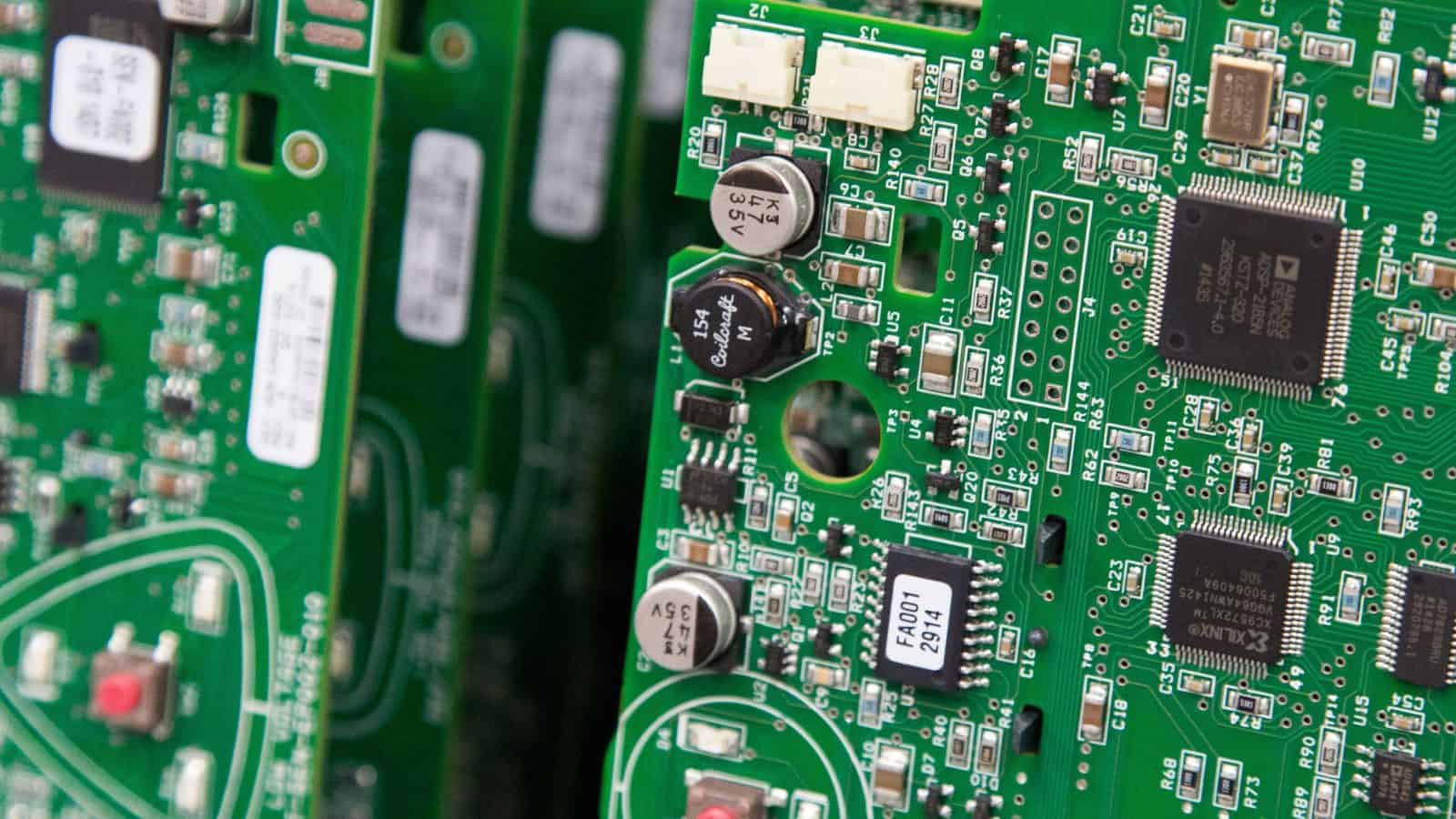Manufacturers: AI Regulations Should Support Innovation and U.S. Leadership
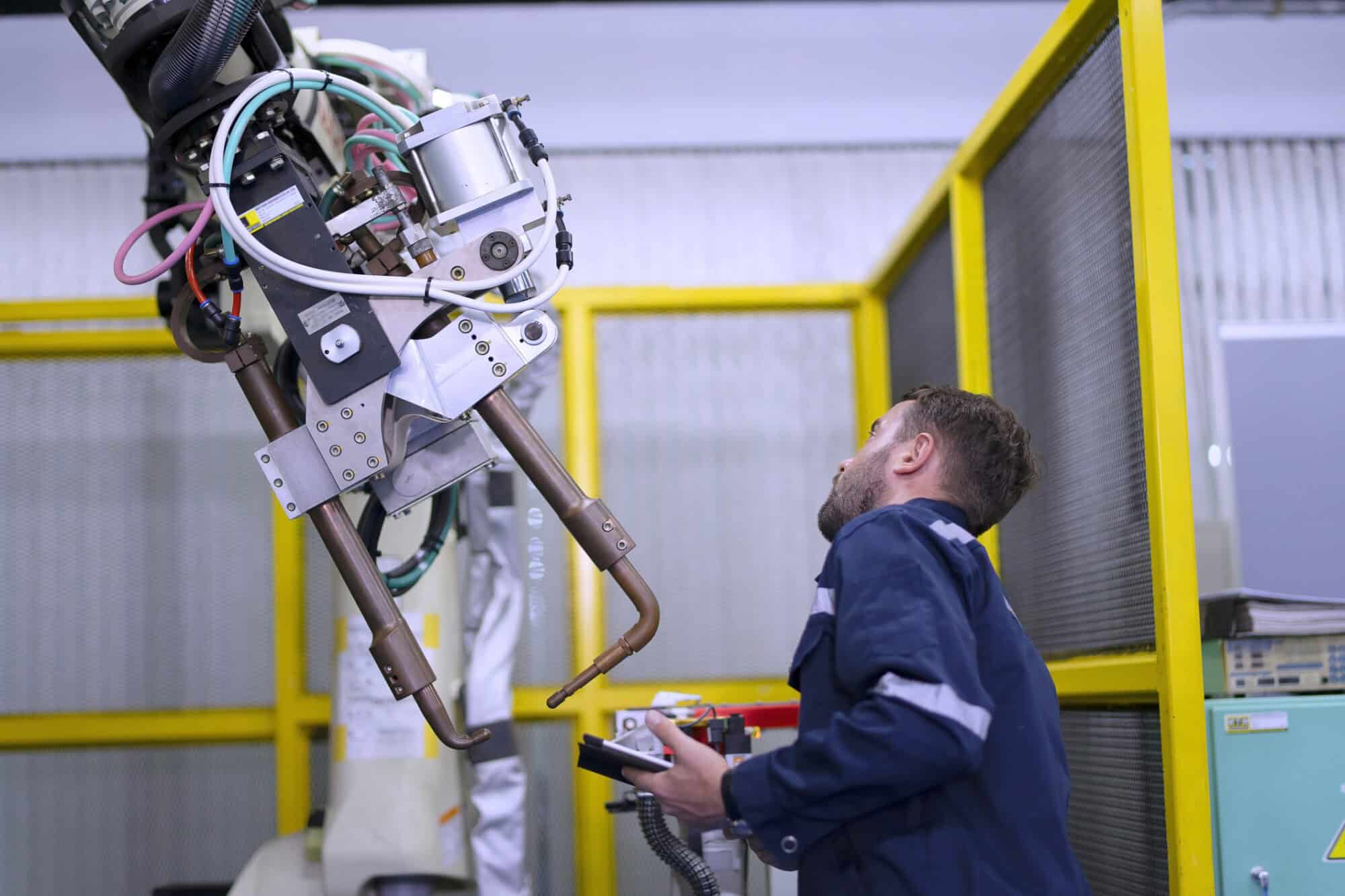
The introduction of artificial intelligence has been a boon to manufacturing, and the technology will continue to have a positive impact—as long as regulations are “right-sized,” manufacturers told Congress this week.
What’s going on: “Manufacturers are utilizing AI in myriad ways on the shop floor and throughout their operations,” the NAM told the House Subcommittee on Commerce, Manufacturing and Trade in a statement for the record at Wednesday’s hearing, where data was cited.
- “The diverse use-cases of AI in manufacturing suggest a need for a cautious regulatory approach to this groundbreaking technology: one that supports innovation and U.S. leadership in AI while providing context-specific, risk-based, right-sized rules of the road for manufacturers,” the NAM said.
- Giving testimony at the hearing, Siemens USA President and CEO and NAM Board Member Barbara Humpton discussed the many benefits of using AI in manufacturing and emphasized the need to ensure that AI regulations include “targeted” rather than “overly broad” definitions.
Industrial vs. consumer-focused AI: First, it’s important to distinguish between industrial and consumer-facing AI, Humpton told the subcommittee members.
- “Industrial AI is different from consumer AI,” she said. “Industrial AI uses controlled data from the manufacturing environment to help manufacturers create business value. Think better products, more efficient operations, a more prepared workforce. … AI will enable all companies—from startups to small and medium enterprises to industrial giants—to thrive in this new era of American manufacturing.”
- In written testimony, she added that “the core distinction of industrial AI is that it is trained on highly monitored data from sensors and machines, providing a more reliable foundation for training AI models.”
Simple, singular and targeted: Regulation of AI should be undertaken with a light touch and following a full accounting of on-the-books laws to prevent duplicative and/or contradictory rules, the NAM said.
- “[P]olicymakers should always review existing laws and regulations before enacting new ones, because most uses of AI correspond to tasks and objectives that industry has faced for a long time and that are thus highly likely to have already been addressed by existing laws and regulations,” said the NAM, which also referenced its first-of-its-kind AI report, “Working Smarter: How Manufacturers Are Using Artificial Intelligence,” released last May.
- “Similarly, policymakers must right-size any compliance burden associated with AI regulation,” the NAM continued. “The ubiquitous use of AI throughout modern manufacturing, as well as manufacturing’s dependence on innovation, underscore the need for rules that enable rather than hinder manufacturers’ development and adoption of AI systems.”
Protect without hindering: Congress “must advance industrial AI by prioritizing strong rules for digital trade, especially to include strong protections for source code and algorithms,” Humpton went on in her written testimony. “We encourage policymakers to build upon the success of previous U.S.-led efforts to protect intellectual property.”
- Legislators must also safeguard privacy and protect against baseless legal claims, the NAM said. “[I]t is … crucial that Congress take steps to maintain the privacy of personal data when utilized in AI contexts. … A federal standard should avoid a patchwork of state-level rules by fully preempting state privacy laws; it also should protect manufacturers from frivolous litigation.”
The last word: “The range and importance of uses of AI—transforming every aspect of the core of manufacturers’ operations—make it clear that AI has become integral to manufacturing,” said the NAM. “With the right federal policies, manufacturers in the U.S. will continue to devise new and exciting ways to leverage AI to lead and innovate and stay ahead of their global competitors.”
NAM: Clarify 30C Tax Credit Rulemaking

The “30C” tax credit has the potential to spur manufacturing investment, but the Internal Revenue Service and Treasury Department must first clarify some of their proposed rules regarding it, the NAM said this week.
What’s going on: In September, the IRS and Treasury Department jointly proposed regulations regarding Section 30C of the U.S. tax code’s Alternative Fuel Vehicle Refueling Property Tax Credit, which was changed and expanded by the Inflation Reduction Act of 2022.
- “A key purpose of the energy provisions of the IRA was to reduce greenhouse gas emissions and spur manufacturing investments in low emissions and renewable energy sectors,” NAM Vice President of Domestic Policy Chris Phalen told the IRS on Monday.
- “Manufacturers make vehicles that use alternative fueling stations, many of our members produce the components … that go into these stations and manufacturers will construct and operate these refueling properties. These companies require certainty and specificity to make final investment decisions.”
What must be done: To that end, the NAM told the agencies the following changes should be made to the proposed regulations for the 30C tax credit:
- Extend the allowed transition period for organizations to update “census tract designations to reflect population data in the years 2016–2020,” as the draft rulemaking mandates that those wishing to take advantage of the 30C credit “must place the property into service within a specific census tract designation.”
- Clarify whether the location of the refueling infrastructure “would need to be made available to the public to qualify for the 30C tax credit.”
- Provide tax credit “eligibility for certain property directly attributable to the operation of alternative fuel vehicle refueling property, such as electrical panels and conduit/wiring, and ask that the agency also consider related construction and other project costs for eligibility.”
NAM Sees Strength for Manufacturing as Washington Transitions
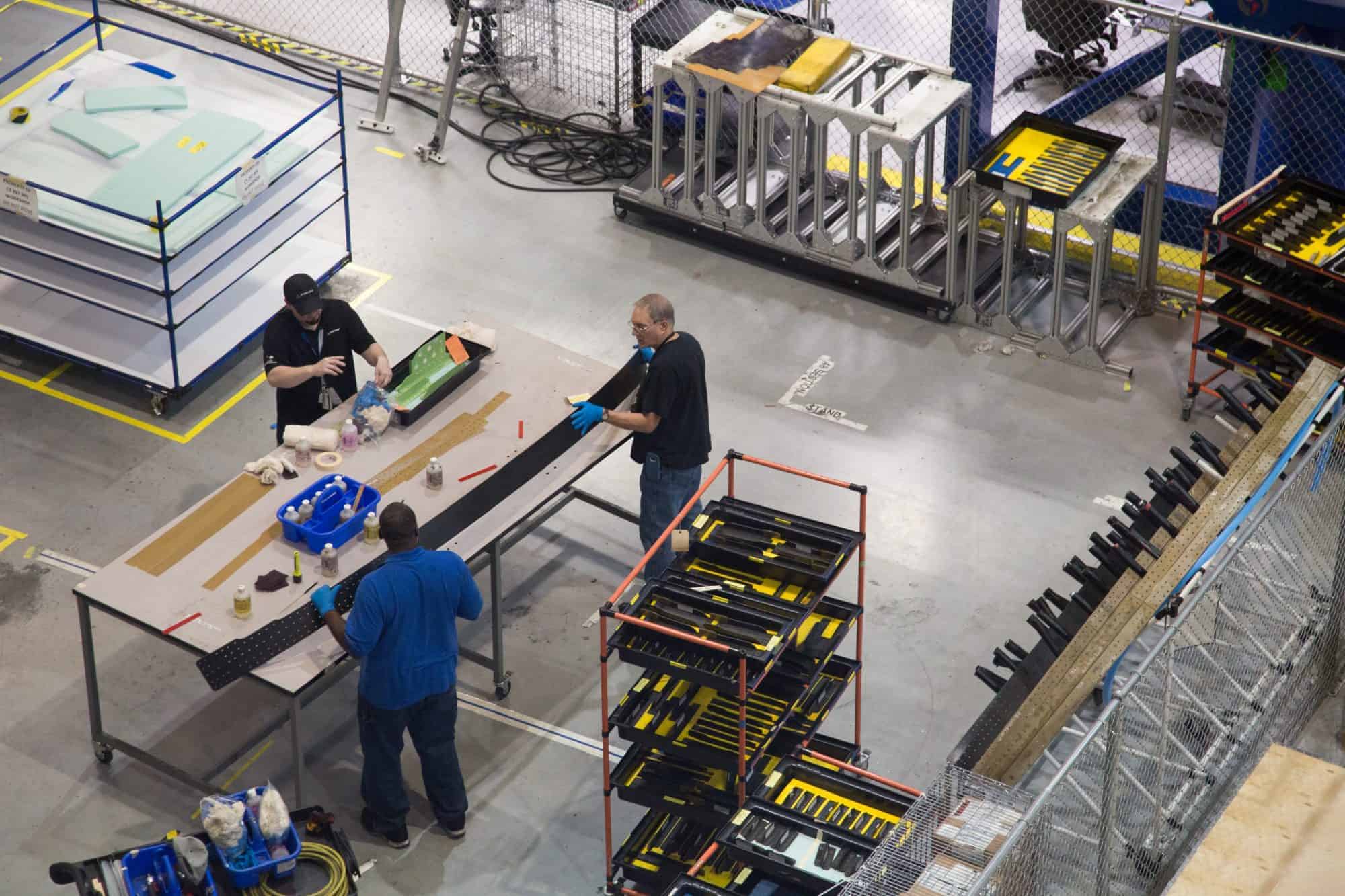
With a new administration and Congress on the horizon, the NAM is signaling confidence in its ability to secure wins for manufacturing in the United States, highlighting both recent achievements and policy priorities moving forward.
“The NAM has always focused on what’s best for manufacturing in America, and our track record speaks to that,” said NAM Executive Vice President Erin Streeter. “Our approach is consistent because we know what it takes to get results.”
What we’ve delivered: With post-partisan engagement, the NAM has achieved historic policy wins across both recent administrations, including:
- Tax reform: The NAM’s advocacy helped shape the 2017 tax cuts, driving billions in savings that manufacturers have reinvested in jobs, innovation and facility upgrades.
- Regulatory certainty: The NAM has played a pivotal role in streamlining regulations, reducing compliance costs under the Trump administration and working to slow regulatory expansion during the Biden years.
- United States-Mexico-Canada Agreement: The NAM was a key advocate for USMCA, safeguarding U.S. jobs by ensuring fairer competition and greater access to key markets.
- Energy advances: NAM-backed policies have supported growth in domestic energy production, creating a more stable energy market.
- Infrastructure and CHIPS Act: The NAM was instrumental in securing the historic Bipartisan Infrastructure Law and the CHIPS and Science Act, both critical for modernizing the economy, bolstering national security and ensuring a reliable semiconductor supply.
“These wins demonstrate what we bring to the table,” Streeter said. “By staying focused on manufacturing’s priorities, we can partner effectively with the new administration and Congress to create and protect jobs and strengthen communities.”
Looking ahead: The NAM’s focus on core issues remains critical for keeping the sector competitive and resilient, Streeter continued. These issues include:
- Securing tax reform: The NAM’s “Manufacturing Wins” campaign aims to lock in key 2017 tax provisions that manufacturers rely on for stability and growth. “Tax reform has been a game-changer,” said Streeter. “Protecting that progress means more jobs and manufacturing-led growth across the country.”
- Regulatory certainty: The NAM is advocating for balanced regulations that support competitiveness. “Manufacturers thrive with clear, fair rules,” Streeter noted. “We’re making sure Washington understands the importance of regulatory stability—and the danger of excessive regulation.”
- Energy security: The NAM is working to secure reliable, affordable energy while fostering innovation in sustainability. “Energy security and grid reliability are top of mind for every manufacturer,” Streeter added. “We’re ensuring manufacturers can continue to innovate, grow and drive America forward.”
Bottom line: The NAM remains focused on advocating for policies that strengthen U.S. manufacturing. “Our success is built on trust and influence,” Streeter said. “Our members know the NAM is a constant force, with the relationships and expertise to deliver, regardless of political changes.”
In related news, President-elect Trump has named campaign manager Susie Wiles as White House chief of staff (Reuters, subscription), a choice NAM President and CEO Jay Timmons called “a powerful move to bring bold, results-driven leadership to the White House from day one.”
NAM to Commerce: Security, Competitiveness Go Together

Manufacturers agree that the U.S. should address the potential national security and privacy risks associated with connected vehicles—those that use technologies to communicate with each other and other systems. But “[n]ational security, privacy and economic strength can be pursued in conjunction with one another,” the NAM told the Commerce Department this week.
What’s going on: In September, the Commerce Department’s Bureau of Industry and Security proposed rules to ban connected vehicles that integrate information and communications technology from China and Russia (POLITICO).
- While manufacturers support safeguarding efforts, “[o]ur competitiveness also requires national security challenges to be addressed through proportionate actions … [that] do not unduly hinder” American manufacturing, NAM Managing Vice President of Policy Chris Netram told BIS on Monday.
- The rule’s software prohibitions would go into effect for vehicles model year 2027, while the hardware regulations would take effect for vehicles model year 2030. The NAM is asking BIS to discuss with stakeholders whether they need more time to comply, given the length of the automotive design and development cycles.
What it could do: If finalized, the rule would require automotive manufacturers using Chinese or Russian technology to find new suppliers.
The problem: “Automotive supply chains are highly complex, with [information and communications technology and services] embedded in the products of many sub-suppliers who sell to automotive original equipment manufacturers,” Netram continued.
- What’s more, information and communications technology and services “are foundational technologies across the manufacturing ecosystem and wider economy. As such, the rule in its current form could generate unintended consequences both within the automotive industry and across the broader ICTS supply chain, violating the department’s obligation to engage in reasoned decision making and avoid arbitrary and capricious rulemaking.”
What should happen: The NAM urged BIS to take several actions, including the following:
- Clearer definitions: Certain wording in the rule should be rephrased for clarity, including “Person Owned by, Controlled by or Subject to the Jurisdiction or Direction of a Foreign Adversary” and “Connected Vehicle.”
- Covered software: “[T]he NAM urges BIS to consider revising the proposed rule to ensure it does not require visibility into and control over the software code provided by an OEM’s tier 3 suppliers and beyond.”
- Specific authorizations: “[T]he NAM recommends that BIS issue clear guidance about what criteria the Office of Information and Communications Technology would use to review and approve the risk assessments and the measures proposed by the applicant to mitigate the risks.”
- Attestations of compliance: Allow companies “to attest to their compliance” rather than “document and demonstrate compliance” to safeguard trade secrets.
The final say: With the NAM’s recommended changes, the BIS’s draft rulemaking “will support national security and privacy while ensuring that a vibrant manufacturing industry can continue to innovate and power growth in America for years to come,” Netram concluded.
Manufacturer Sentiment Declines
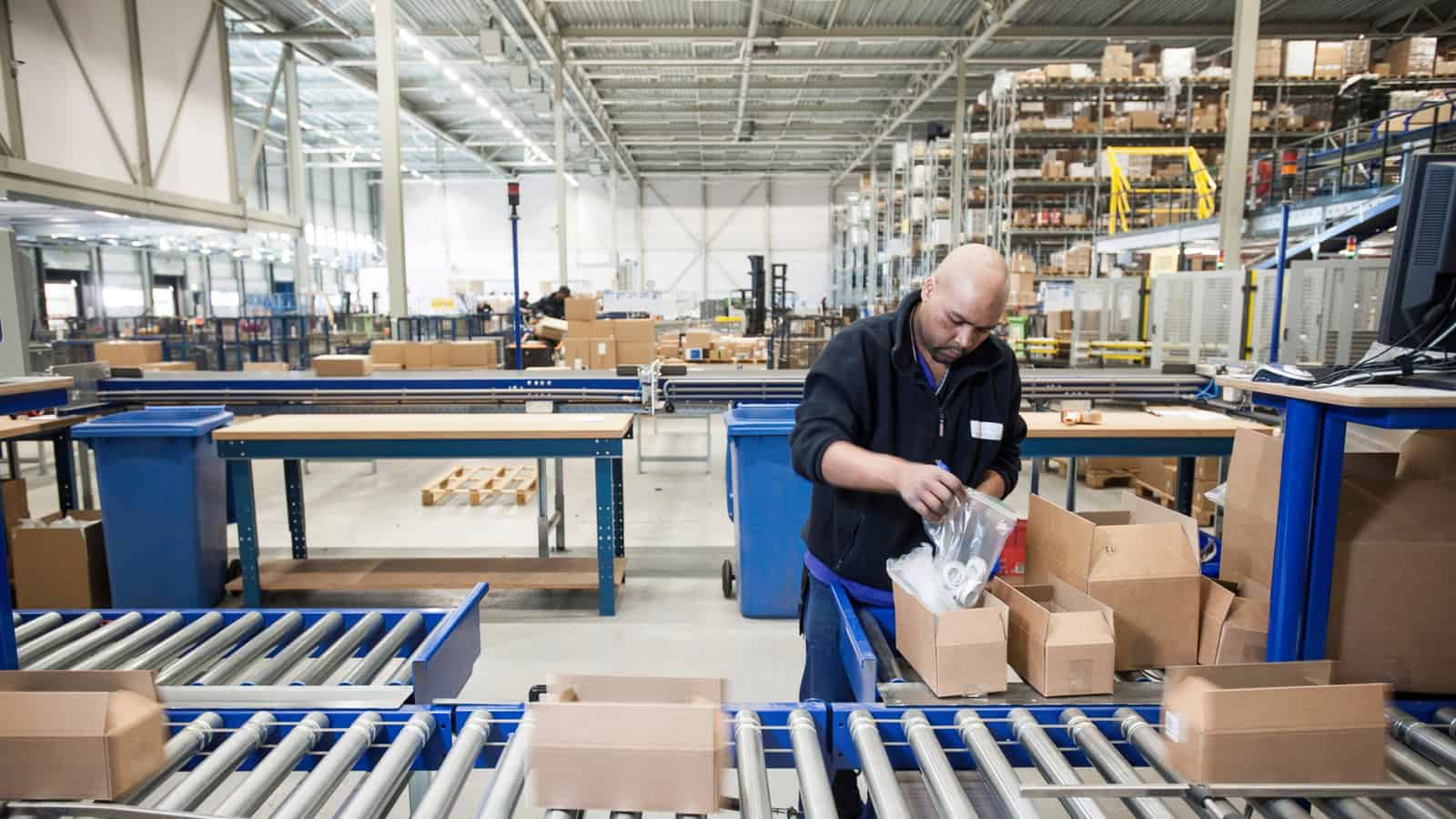
Manufacturer sentiment fell in the third quarter of this year, according to the NAM’s Q3 2024 Manufacturers’ Outlook Survey, out Wednesday.
What’s going on: Results of the survey, which was conducted Sept. 5–20, reflect “preelection uncertainty,” NAM President and CEO Jay Timmons said—but also larger economic concerns.
- “The good news is that there is something we can do about it,” said Timmons. “We will work with lawmakers from both parties to halt the looming tax increases in 2025; address the risk of higher tariffs; restore balance to regulations; achieve permitting and energy security; and ease labor shortages and supply chain disruptions.”
Key findings: Notable data points from the survey include the following:
- Some 62.9% of respondents reported feeling either somewhat or very positive about their business’s outlook, a decline from 71.9% in Q2.
- A weaker domestic economy was the top business challenge for those surveyed, with 68.4% of respondents citing it.
- Nearly nine out of 10 manufacturers surveyed agreed that Congress should act before the end of 2025 to prevent scheduled tax increases on manufacturers.
- The overwhelming majority—92.3%—said the corporate tax rate should remain at or below 21%, with more than 71% saying a higher rate would have a negative impact on their businesses.
- More than 72% said they support congressional action to lower health care costs through the reform of pharmacy benefit managers.
The last word: “When policymakers take action to create a more competitive business climate for manufacturers, we can sustain America’s manufacturing resurgence—and strengthen our can-do spirit,” Timmons said.
- “This administration and Congress—and the next administration and Congress—should take this to heart, put aside politics, personality and process and focus on the right policies to strengthen the foundation of the American economy.”
Improving Medical Supply Chain Resiliency

Medical supply chains are critical to ensuring the health and security of Americans—and Congress should act to bolster their resiliency, the NAM told members of Congress this month.
What’s going on: “The COVID-19 pandemic brought to light the risks and instability resulting from concentration and choke points in medical supply chains, though the pandemic also showed how medical supply chains can quickly adjust to external shocks,” NAM Managing Vice President of Policy Chris Netram told Reps. Brad Wenstrup (R-OH), Blake Moore (R-UT) and August Pfluger (R-TX) in response to a request for information on how to improve medical supply chains.
What should be done: The NAM recommended that Congress should work with manufacturers “on a comprehensive approach to find ways to onshore, near-shore and friend-shore more of the medical supply chain,” Netram continued.
There are several actions the federal government should take to fortify medical supply chains, including:
- “[C]reating an environment where small businesses can continue to thrive” and where large companies can maintain their pandemic-era practices of “leveraging sources of domestic production when feasible, working with existing smaller suppliers to improve their reliability” and sourcing goods through new suppliers;
- Streamlining the Food and Drug Administration’s new-supplier certification process;
- Taking “creative steps to incentivize onshoring, near-shoring and friend-shoring, as opposed to imposing punitive or unworkable requirements to do so”;
- Passing the Medical Supply Chain Resiliency Act (H.R. 4307/S. 2115), which would authorize the president to strategically create new trade agreements specific to medical goods with our allies and partners;
- Strategically refining Section 301 tariffs on imports from China;
- Restoring “immediate research and development expensing and full expensing of capital equipment purchases,” ensuring “that the corporate tax rate does not exceed 21%” and making the pass-through deduction permanent; and
- Completing “reauthorization of the Workforce Innovation and Opportunity Act and expansion of Pell grant eligibility to short-term training programs,” as well as supporting solutions that incentivize companies to collaborate to reduce the manufacturing-worker shortage.
The bottom line: “[A]n approach that creates incentives that reduce the cost and complexity of moving supply chains can help U.S. manufacturers to be more resilient in the face of a future global crisis and better able to serve patients who depend on these products,” Netram said.
New DOD Loan to Fund “Critical Technologies” Manufacturing
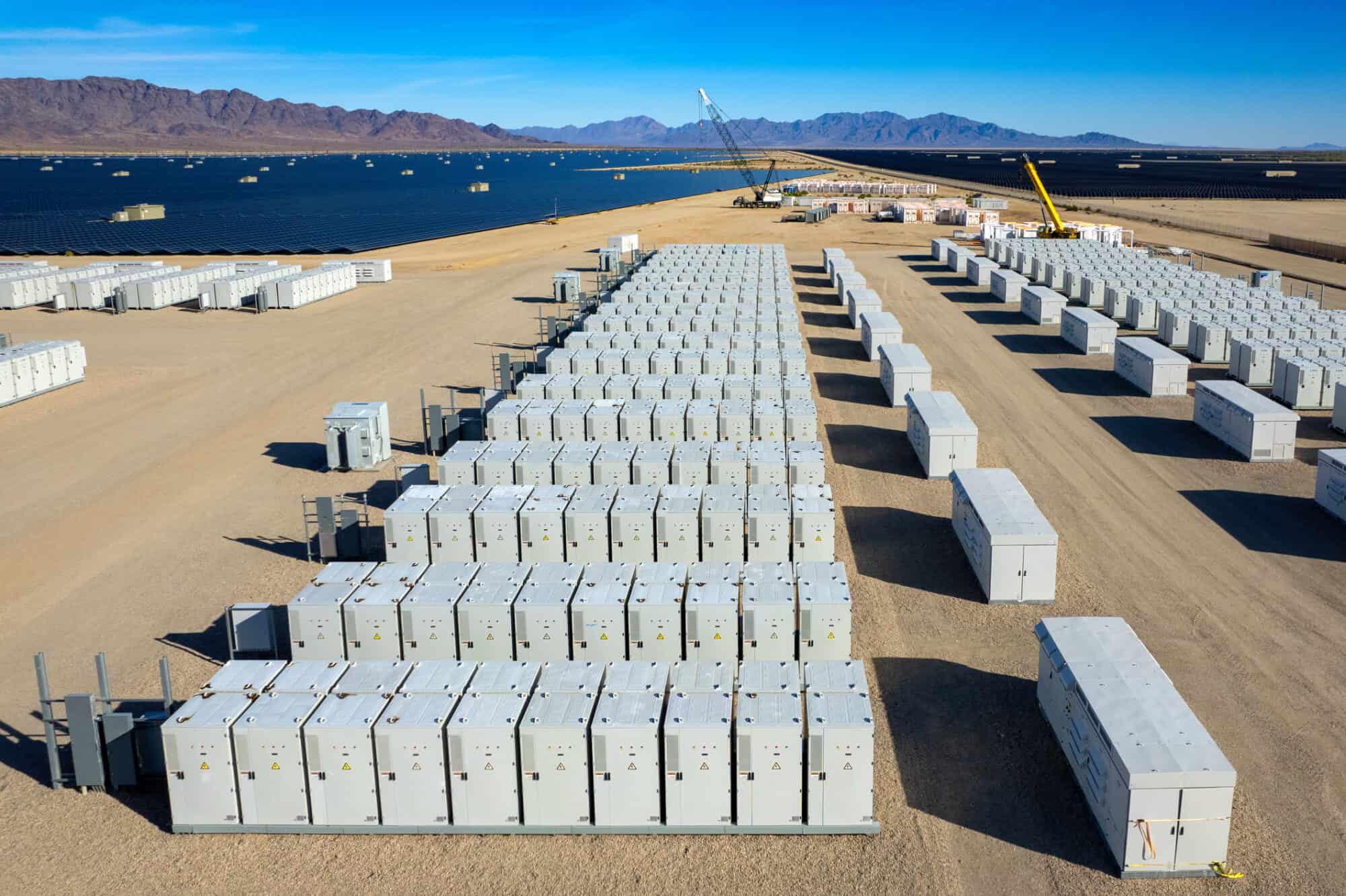
The Defense Department’s Office of Strategic Capital is now accepting applications for flexible direct loans to build, expand and/or modernize “critical technologies” facilities (Federal Register).
- It’s also seeking input from companies and trade associations on the Defense Department’s loan program, via a Request for Information open through Oct. 22 (Federal Register).
What’s going on: The OSC’s credit program, launched Sept. 30, aims “to attract and scale private capital in industries and technologies that are critical to America’s national and economic security,” according to the Defense Department. This is part one of the application process.
- The financing is geared toward manufacturers that must spend significantly on industrial or specialty equipment to create new assembly lines in existing facilities.
- The money is also intended to help them cover “soft” expenses, such as factory preparation and installation, associated with critical technology projects.
Why it’s important: “The funding from this program could benefit manufacturers of all sizes that are working to expand their businesses and product lines in critical areas of the economy,” said NAM Director of Energy and Natural Resources Policy Mike Davin.
- The OSC loans offer flexible terms, a U.S. Treasury-comparable interest rate, long repayment periods and deferred payments.
Who’s eligible: Manufacturers within the 31 “Covered Technology Categories”— which include advanced manufacturing, cybersecurity, battery storage and spacecraft—are encouraged to apply.
- There is no company-size or employee-number threshold or limit, and manufacturers with existing federal grants are eligible.
NAM Emphasizes USMCA, Protecting Investors in Mexico Meetings
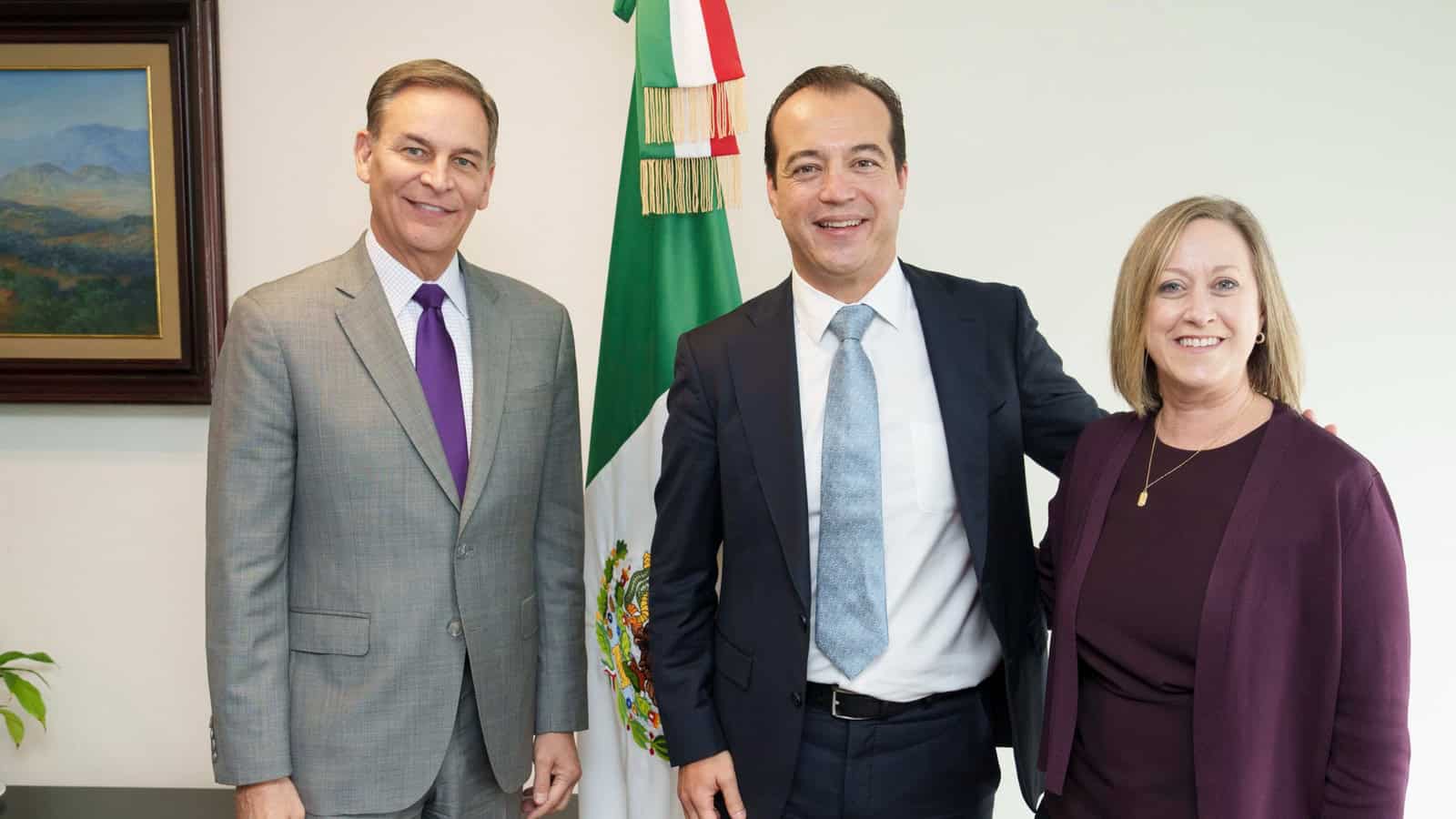
In high-level meetings with government, manufacturing and trade group leaders held in Mexico last week, the NAM hammered home a key message: For North American manufacturing to remain globally competitive, Mexico must protect investor holdings in the country.
What’s going on: During a jam-packed three-day visit to Mexico City, NAM President and CEO Jay Timmons and an NAM contingent met with top officials in the new Sheinbaum administration, as well as leadership at multiple agencies and associations.
- These included newly appointed Deputy Trade Minister Luis Rosendo Gutiérrez, the Business Coordinating Council (CCE), the Confederation of Industrial Chambers of Mexico (CONCAMIN), the Mexico Business Council (CMN), the National Council of the Export Manufacturing Industry (INDEX) and others.
What they said: The NAM’s main message at each gathering was the same: Companies investing in Mexico need assurance that their portfolios will be protected regardless of the fate of proposed judicial reforms in the country.
- The NAM also underscored the importance of the U.S.–Mexico–Canada Agreement, which is due for review in 2026, and the necessity of ensuring that the deal is upheld for all three parties.
- If its terms are respected, USMCA could help North American manufacturing outcompete China.
On China: This week, just days after his office’s meeting with the NAM, Gutiérrez announced that the Sheinbaum administration will seek U.S. manufacturers’ help to reshore—mainly from China—the production of some critical technologies (The Wall Street Journal, subscription).
- “We want to focus on supporting our domestic supply chains,” he told the Journal, adding that talks with U.S. companies are still in the informal stage.
The NAM says: “Manufacturing is at the heart of the USMCA,” said NAM Vice President of International Policy Andrea Durkin, who was part of the NAM group on the ground in Mexico. “The NAM intends to work to ensure that the agreement strengthens the competitiveness of manufacturers.”
NAM Launches Ad Campaign for PBM Reform

The NAM has launched a new wave of ads in D.C. and nine states, extending its seven-figure campaign urging policymakers to reign in pharmacy benefit managers, underregulated middlemen who drive up the costs of prescription medications for manufacturers and manufacturing workers.
A quick refresher: PBMs sit in the middle of the health care industry, negotiating with employer health plans, insurers, biopharmaceutical manufacturers, pharmacies and other players to determine what prescriptions employees can access and what they pay for them. While their job is ostensibly to reduce the costs of medicines, often they do the exact opposite.
- PBMs have been found to steer patients toward pricier options, inflict steep mark-ups and hidden fees and even pocket large portions of the rebates that biopharmaceutical manufacturers intend for American workers and their families.
NAM in action: The NAM has been a staunch voice supporting PBM reform on Capitol Hill, recently laying out manufacturers’ concerns for the House Committee on Oversight and Accountability.
- The committee conducted its third hearing on PBM overreach in July, when it also released a highly critical report on PBMs that echoed many of the NAM’s concerns.
- In addition, the NAM is supporting several key measures to increase oversight of PBMs’ business models and reform their pricing strategies, including the DRUG Act and the PBM transparency provisions in the Lower Costs, More Transparency Act.
What Congress should do: The NAM is advocating for three major reforms to the PBM system, including:
- Increasing transparency in PBMs’ business models, including how their compensation influences health care decisions and how their policies dictate a medicine’s cost and formulary placement;
- Rebate pass-through, which will ensure health care savings are passed directly to manufacturers and their workers rather than being pocketed by PBMs; and
- Delinking PBMs’ compensation from a medicine’s list price, removing their incentive to put upward pressure on list prices to maximize their own profits.
Benefits for all: The NAM is calling on Congress to enact these reforms in the commercial insurance market, not just in government programs like Medicare and Medicaid, so that all Americans can enjoy lower-cost health care benefits.
What to watch: The NAM is calling on Congress to act on this issue during the lame-duck session following the election.
NAM to Congress: Allow Manufacturers to Keep Innovating

The 21st Century Cures Act of 2016 and its 2021 follow-on, Cures 2.0, are providing a pathway toward potentially groundbreaking cures and treatments—but there’s room for even more improvement in the federal government’s handling of pharmaceutical innovation, the NAM said this week.
Now, Reps. Diana DeGette (D-CO) and Larry Bucshon (R-IN) are looking to build on the legacy of these two bills.
The background: The 21st Century Cures Act, introduced in 2015 by Rep. DeGette and former Rep. Fred Upton (R-MI) and signed into law the following year, aimed to speed up the development and delivery of medical innovation.
- The 2016 measure “ensured that federal agencies like the [Food and Drug Administration], the Centers for Medicare & Medicaid Services and the National Institutes of Health had the tools they needed to keep pace with and adapt to the tremendous advances being made by biopharmaceutical and medical device manufacturers,” said NAM Vice President of Domestic Policy Charles Crain.
- Cures 2.0, passed after the global pandemic, created the Advanced Research Projects Agency for Health, “a home within the federal government for high-risk, high-reward medical research.”
New medical advances: The face of medical innovation “has changed dramatically” in the past eight years, Crain pointed out, as we’ve seen the first-ever federal approval of gene therapy and the development of vaccines using mRNA technology.
What’s needed: The new landscape necessitates more congressional action, Crain went on, including:
- Continuing to embrace the new technologies that emerged from the COVID-19 pandemic like mRNA and other innovations;
- Modernizing federal agencies such as the FDA to keep up with these innovations; and
- “[E]nsuring the government’s processes for reviewing and approving new treatments are as innovative as the treatments themselves.”
Why it’s important: Biopharmaceutical manufacturers are economic powerhouses. In 2021, they:
- Accounted for $355 billion in value-added output to the U.S. economy;
- Contributed a total of nearly 1.5 million direct and indirect jobs; and
- Contributed $147 billion in labor income.
